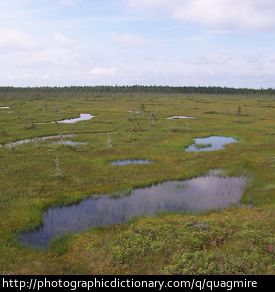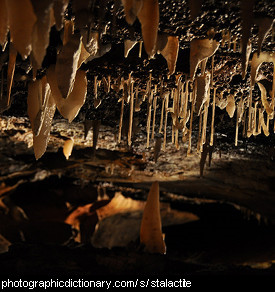A plateau is a wide, flat area of land that is higher than the surrounding area, often due to being neighbored by canyons or valleys on all sides.
Rainbows happen when the sun shines through a very fine spray of water, like rain in the air or the spray from a garden hose or even from a waterfall.
The rainbow is colourful because as sunlight travels through the water spray, it splits into a spectrum of colours. All the colours you see in a rainbow are there all the time in normal light, but they are mixed up together so you only see white light.
You can also see the colours of the rainbow by shining light through a prism.
Ris forRainforest
A rainforest is an area with very high rainfall. They are usually in the warmer parts of the world. Rainforests have an amazing amount of plants and animals living in them, around half of the world's plant and animal species are found in rainforests.
Sis forStalactite
Stalactites are formed when water that has a lot of minerals dissolved in it drips through the roof of a cave and some of the minerals are left behind. Over a long time, the mineral deposits form into spikes hanging from the ceiling of the cave.
Where water drips from a stalactite, stalagmites form.














